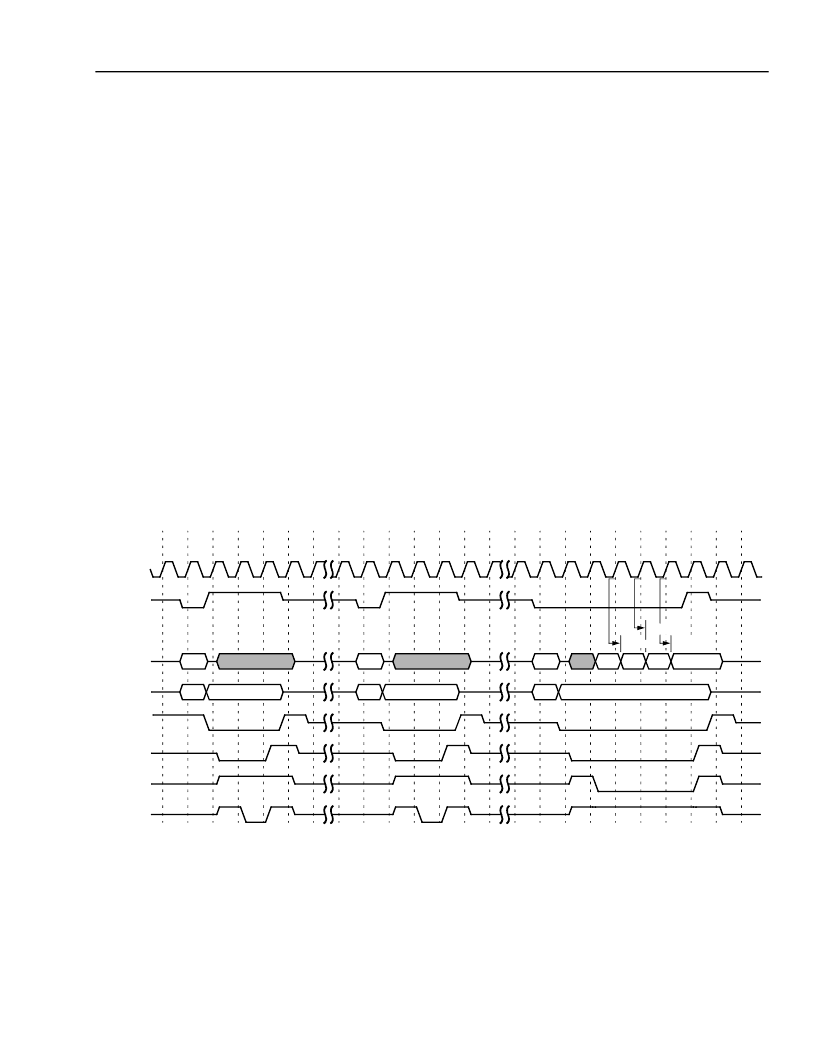- 您現(xiàn)在的位置:買賣IC網(wǎng) > PDF目錄383723 > OR3TP12-6PS240I Quad 2.3V 10 MHz OP, I temp, -40C to +85C, 14-SOIC 150mil, T/R PDF資料下載
參數(shù)資料
| 型號(hào): | OR3TP12-6PS240I |
| 英文描述: | Quad 2.3V 10 MHz OP, I temp, -40C to +85C, 14-SOIC 150mil, T/R |
| 中文描述: | 用戶可編程ASIC的特殊功能 |
| 文件頁數(shù): | 75/128頁 |
| 文件大?。?/td> | 2450K |
| 代理商: | OR3TP12-6PS240I |
第1頁第2頁第3頁第4頁第5頁第6頁第7頁第8頁第9頁第10頁第11頁第12頁第13頁第14頁第15頁第16頁第17頁第18頁第19頁第20頁第21頁第22頁第23頁第24頁第25頁第26頁第27頁第28頁第29頁第30頁第31頁第32頁第33頁第34頁第35頁第36頁第37頁第38頁第39頁第40頁第41頁第42頁第43頁第44頁第45頁第46頁第47頁第48頁第49頁第50頁第51頁第52頁第53頁第54頁第55頁第56頁第57頁第58頁第59頁第60頁第61頁第62頁第63頁第64頁第65頁第66頁第67頁第68頁第69頁第70頁第71頁第72頁第73頁第74頁當(dāng)前第75頁第76頁第77頁第78頁第79頁第80頁第81頁第82頁第83頁第84頁第85頁第86頁第87頁第88頁第89頁第90頁第91頁第92頁第93頁第94頁第95頁第96頁第97頁第98頁第99頁第100頁第101頁第102頁第103頁第104頁第105頁第106頁第107頁第108頁第109頁第110頁第111頁第112頁第113頁第114頁第115頁第116頁第117頁第118頁第119頁第120頁第121頁第122頁第123頁第124頁第125頁第126頁第127頁第128頁

Lucent Technologies Inc.
Lucent Technologies Inc.
75
Data Sheet
March 2000
ORCA OR3TP12 FPSC
Embedded Master/Target PCI Interface
PCI Bus Core Target Controller Detailed Description
(continued)
For quad-port mode (Figure 28), the address is transferred on the bus
twdata
in 16-bit segments. If necessary, the
address will be split into two 16-bits components with the LSB being transferred first. A burst operation and dual-
address indication accompanies the address on
twdata[17]
and
twdata[16]
respectively. Assuming a BAR size
greater than 16 bits, the address phase will require two clock cycles, and
twlastcycn
will be asserted on the final or
MSB component of the address. The data phase will also require two clock cycles to transfer every 32-bit read data
word across the 16-bit bus from the FPGA application.
trlastcycn
will be deasserted for all 16-bit components of
the write data phase, except for the final 16-bit component where it is asserted.
trlastcycn
can only be asserted
when
trdataenn
is asserted. See Read Data Transfer section for details on
trlastcycn
.
Example: Target Read Memory Burst, Delayed Transaction
Figure 30 shows the timing on the PCI bus for a Target memory burst read of four 32-bit words handled as a
delayed transaction (
deltrn
= 0). On the PCI interface (Figure 30), three transactions are shown. In the first, the
Target responds to the request after determining that the address matches one of its BARs by asserting
devseln
.
However, since delayed transaction has been specified by the FPGA application (
deltrn
= 0), the Target issues a
retry since the Target read FIFO is empty. The Target waits for the FPGA application to load the Target read FIFO.
Until this occurs, all memory and I/O accesses result in retries as shown by the second transaction in Figure 30.
After the required read data is loaded, the actual data transfer will occur as shown in the third transaction in
Figure 30.
The FPGA interface timing is as shown in Figure 31 and Figure 32 for dual- and quad-port respectively. The Target
FIFO interface timing to the FPGA application is similar for all Target burst reads and is described below for the Tar-
get Read Burst FIFO interface.
5-7551(F)
Figure 30. Target Burst Memory Read, Delayed (PCI Bus, 32-Bit)
TRANSACTION #1: ADDRESS, BYTE ENABLES,
AND COMMAND LATCHED AS A
DELAYED READ REQUEST.
TRANSACTION #2: DISCONNECTED WITHOUT
DATA BECAUSE READ OPERATION
NOT COMPLETED.
TRANSACTION #3: DISCONNECTED WITH DATA
BECAUSE READ OPERATION COMPLETED.
Ta0 Ta1 Ta2 Ta3 Ta4 Ta5 Ta6 Tb0 Tb1 Tb2 Tb3 Tb4 Tb5 Tb6 Tc0 Tc1 Tc2 Tc3 Tc4 Tc5 Tc6 Tc7 Tc8 Tc9
ADRS
ADRS
ADRS
D0
D1
D3
D4
CMD
BEs
CMD
BYTE ENABLES
CMD
BYTE ENABLES
clk
framen
ad
c_ben
irdyn
devseln
trdyn
stopn
ad_del
ad_del
ad_del
相關(guān)PDF資料 |
PDF描述 |
|---|---|
| OR3TP12 | Field-Programmable System Chip (FPSC) Embedded Master/Target PCI Interface |
| OR62 | OR62 is a 6-input OR gate with 2x drive strength |
| OR73 | 7-input OR gate with 3x drive strength. |
| OR8GU41 | DIFFUSED TYPE (HIGH SPEED RECTIFIER APPLICATIONS) |
| ORCAORT4622 | Field-Programmable System Chip (FPSC) Four-Channel x 622 Mbits/s Backplane Transceiver |
相關(guān)代理商/技術(shù)參數(shù) |
參數(shù)描述 |
|---|---|
| OR3TP127BA256-DB | 功能描述:FPGA - 現(xiàn)場(chǎng)可編程門陣列 2016 LUT 187 I/O RoHS:否 制造商:Altera Corporation 系列:Cyclone V E 柵極數(shù)量: 邏輯塊數(shù)量:943 內(nèi)嵌式塊RAM - EBR:1956 kbit 輸入/輸出端數(shù)量:128 最大工作頻率:800 MHz 工作電源電壓:1.1 V 最大工作溫度:+ 70 C 安裝風(fēng)格:SMD/SMT 封裝 / 箱體:FBGA-256 |
| OR3TP127BA352-DB | 功能描述:FPGA - 現(xiàn)場(chǎng)可編程門陣列 2016 LUT 187 I/O RoHS:否 制造商:Altera Corporation 系列:Cyclone V E 柵極數(shù)量: 邏輯塊數(shù)量:943 內(nèi)嵌式塊RAM - EBR:1956 kbit 輸入/輸出端數(shù)量:128 最大工作頻率:800 MHz 工作電源電壓:1.1 V 最大工作溫度:+ 70 C 安裝風(fēng)格:SMD/SMT 封裝 / 箱體:FBGA-256 |
| OR4 | 制造商:LATTICE 制造商全稱:Lattice Semiconductor 功能描述:ORCASeries 4 FPGAs |
| OR-401045290 | 制造商:ORTRONICS 功能描述:ORTRONICS 24 PORT MODULAR PATCH PANEL |
| OR40300011 | 制造商:ORTRONICS 功能描述:WORSTATION |
發(fā)布緊急采購,3分鐘左右您將得到回復(fù)。